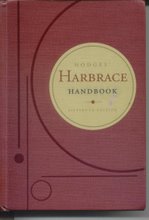In perusing The Elements of Style (the delightful, recent illustrated edition), I was reminded how elegantly Strunk and White express their 11 Elementary Rules of Usage. For example:
11) A participial phrase at the beginning of a sentence must refer to the grammatical subject.
Walking slowly down the road, he saw a woman accompanied by two children.
The word walking refers to the subject of the sentence, not to the woman. To make it refer to the woman, the writer must recast the sentence.
He saw a woman, accompanied by two children, walking slowly down the road.
Participial phrases preceded by a conjuction or by a preposition, nouns in apposition, adjectives, and adjective phrases comes under the same rule if they begin the sentence.
On arriving in Chicago, his friends met him at the station.
On arriving in Chicago, he was met at the station by his friends.
A soldier of proved valor, they entrusted him with the defense of the city.
A soldier of proved valor, he was entrusted with the defense of the city.
Young and inexperienced, the task seemed easy to me.
Young and inexperienced, I thought the task easy.
Without a friend to counsel him, the temptation proved irresistible.
Without a friend to counsel him, he found the temptation irresistible.
Sentences violating Rule 11 are often ludicrous:
Being in a dilapidated condition, I was able to buy the house very cheap.
Wondering irresolutely what to do next, the clock struck twelve.
Subscribe to:
Post Comments (Atom)







1 comment:
Those are the possible concerns and would almost proved to be of utmost importance for the students to regard about if they really wanted to get something out of it. sentence structure corrector
Post a Comment